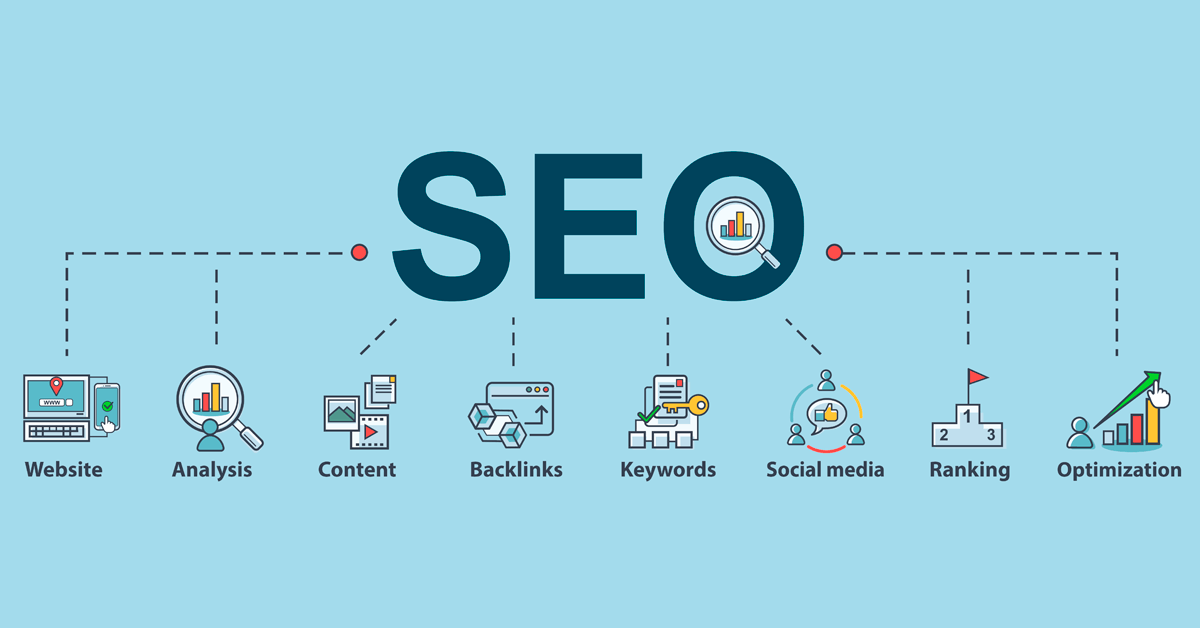
SEO. Search Engine Optimization. These terms can be frustrating and confusing for many remodelers. Part of the problem is that Google is always changing their algorithm, so if you aren't in the industry, it can be tough to keep up! They are making small changes almost daily and large changes multiple times per year.
A Brief History of SEO

In order to understand SEO basics a little bit better, it will be helpful to review a brief history of SEO and how Google originally ranked websites. Google's main goal is to serve it's searchers (people typing things into the Google search engine) with the most relevant content based on the search words and serve that content as fast as possible.
In order to return relevant content, Google indexes all the content on the web and tries to identify what that content is about. When someone does a search, they try to pull the best content that most accurately matches that search.
In the beginning, "getting found" was largely about keywords and inbound links. If you wanted to rank for "remodeling company Seattle", you'd create a page with some content and put "remodeling company Seattle" all over the page. You'd also put that phrase in the meta data (meta keywords, meta description). This helped tell Google that your page was about "remodeling company Seattle". After that, you'd also want to get other people to link back to your page. Ideally, when they linked back to your page, they would hyperlink the words "remodeling company Seattle".
Why are these links important? This was Google's way of identifying if a page should rank higher. Let's look at an example. Remodeling Company ABC has 100 other websites linking back to it. Remodeling Company XYZ has 10 other websites linking back to it. Google looked at this and basically said: "If there are more links going to a website, it must mean that website is important. If 100 other websites thought Remodeling Company ABC's website was important, that we do to. So we will rank it higher."
Makes sense right?
Then, Google started to get smarter. They looked at those 100 links and decided they needed a way to evaulate the "link quality". What if one of those 100 links came from a website that was created yesterday. Should that link really carry the authority of a website that has hundreds of pages and was created 10 years ago? Probably not.
So, Google started to associate a value with various websites, called Page Rank. Now, it wasn't just about getting MORE links, it was about getting QUALITY links. If your company was able to get 10 or 15 links from other high quality websites, that would be more beneficial than 20 or 30 links from weak websites.
Fast forward to today, and Google has over 200 ranking factors in it's algorithm.
-
On Page Optimization
-
Social Signals (likes, shares, etc.)
-
Inbound links
-
Domain history
-
Domain authority
Is SEO Worth the Time, Effort and Money?
With all these factors to consider, you might be thinking: "Is it even worth it? Is trying to rank high on Google worth the time, effort and money?"
Well, the short answer is yes. But, why? The answer is ZMOT.
ZMOT - what the heck is ZMOT?
It stands for the Zero Moment of Truth. A few years ago, Google did an extensive study that looked at the buying process. You can access the entire study here, but I'll give you a quick re-cap.
There used to be a 3 step mental model of marketing.
- Stimulus
- First Moment of Truth
- Second Moment of Truth
Let's look at how this plays out. Dad is watching the football game on TV and sees an ad for a digital camera. He thinks to himself that it would be great to have that (stimulus), so he goes to his favorite electronics store and looks at the product on the shelf (first moment of truth). He talks to the sales rep, asks some questions and makes his purchase. Then, he goes home and starts using his camera (second moment of truth).
Perfect. The model works. Well, this model has changed today. The buying process isn't the same. Here's what it looks like now.
- Stimulus
- ZMOT (Zero Moment of Truth)
- First Moment of Truth
- Second Moment of Truth
Let's look at the same example. Dad is still watching the football game and sees the same commercial for a digital camera. However, today, he grabs his laptop or iPad or Smartphone and gets onto Google. He starts looking at different cameras, reading product reviews, reading testimonials and looking at photos, specs, and anything else he can find. Dad may go into the store, but he may just order the camera right then.
This shift in buying behavior is happening across all industries.

ZMOT in the Remodeling Industry
People looking to do a remodel go online first. They Google looking for remodeling companies in the area. They want to look at photos and videos, so they look at home remodeling contractors websites, but also visit social media sites likes Houzz, Pinterest and Facebook looking for design ideas.
They also start Googling questions such as:
-
"How long does it take to remodel a kitchen?"
-
"How much does it cost to remodel a kitchen?"
-
"What does the process look like for remodeling my bathroom?"
-
"How do you find a reputable contractor?"
-
"What are the 2014 design trends for master suites?"
And many more. If you aren't talking about these questions on your website or blog, you're not getting found. Your competition is though.

Next Steps and Priorities for You
So, what can you do today to start getting caught up on SEO and implementing some strategies for your website? Below, I'm going to lay out a few basic guidelines that will put you on the right path. This isn't everything you need to know, but these are the "big wins" I'd recommend focusing on.
-
Optimize each of your website pages for a relevant keyword or keyword phrase.
-
Example: Your Home Page might be optimized for "Design Build Remodeling Company in Denver"
-
Example: Your Services Page might be optimized for "Design Build Remodeling Services in Denver"
-
Example: Your Portfolio Page might be optimized for "Before and After Remodeling Photos in Denver"
-
-
Create a blog and publish high quality content to it at least weekly. Ideally 2-3x per week.
-
Use location specific keywords in your blog titles. Ex. 3 Kitchen Design Trends to Watch for in Atlanta
-
Share your blog content as well as photo and video content on social channels like Houzz, Facebook and Pinterest.
-
Reach out to trade partners or business partners and ask if they will link to your website from their "partner page".
-
Publish written and video testimonials on your website and 3rd party review pages like Google and Yelp. I also highly recommend Guild Quality.
-
Be as helpful and relevant as possible in all the content you create. Put yourself in the position of your customer and try to answer all their questions before they come to you. Because, they may never come to you if you don't supply that information.



